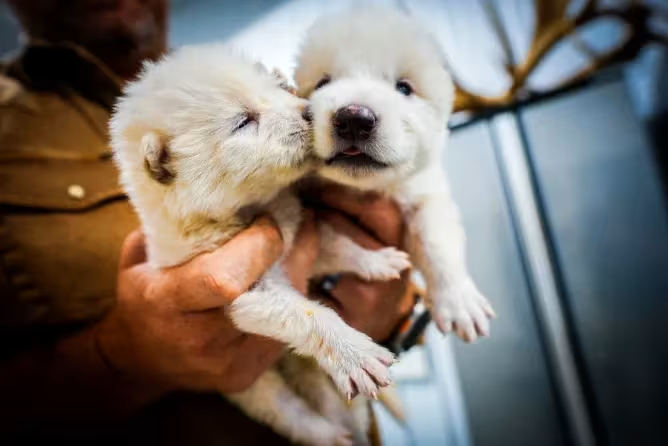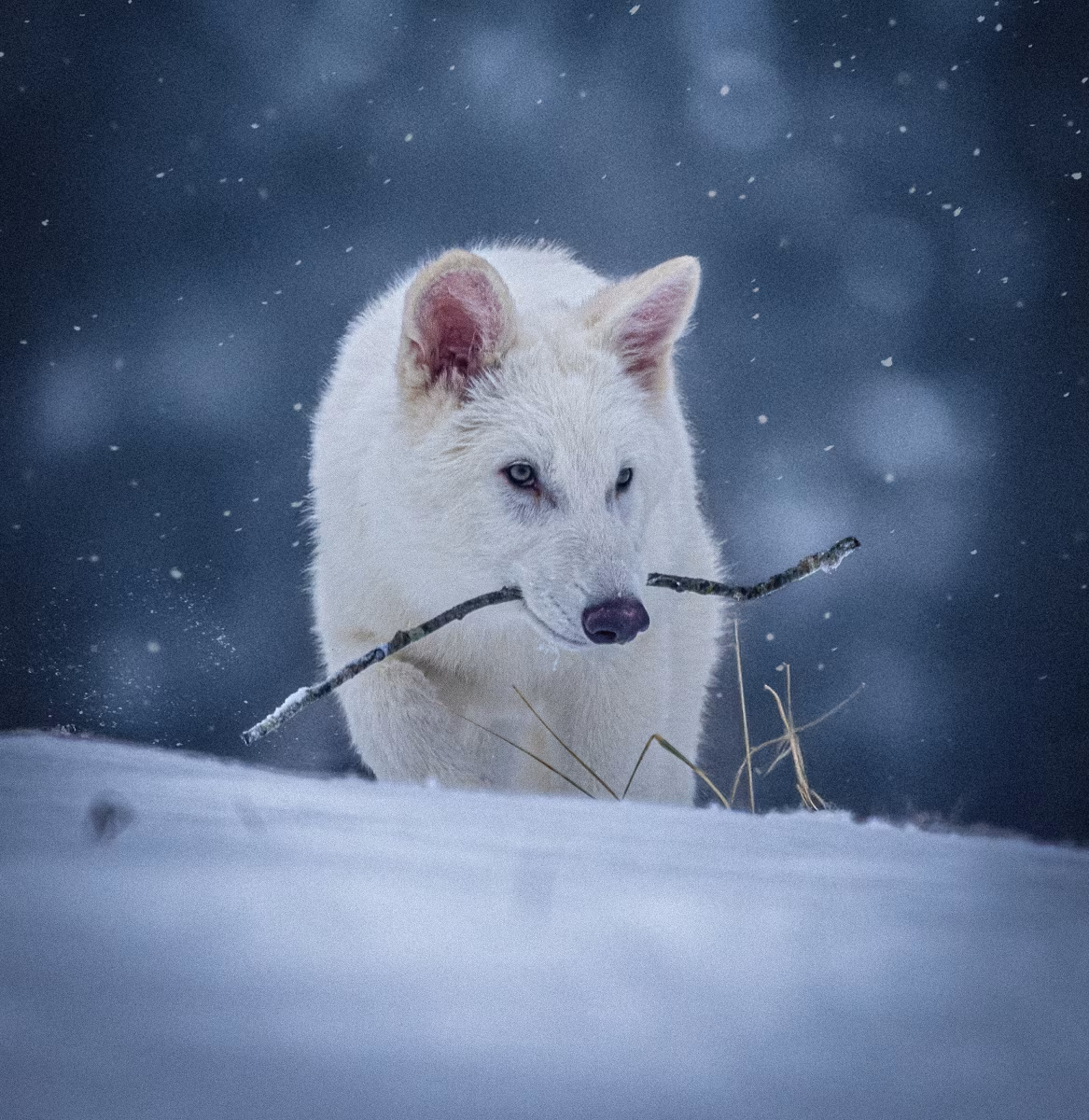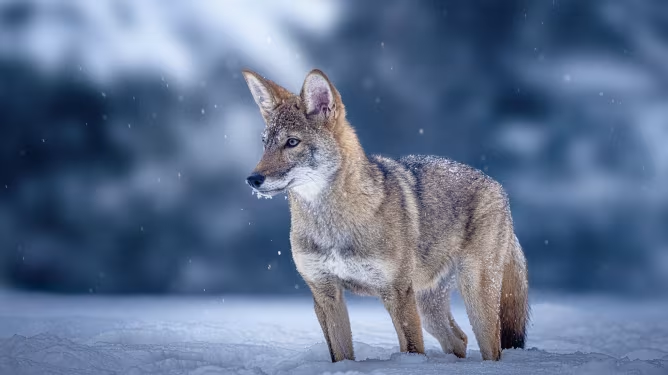Colossal’s Dire Wolf Sparks $10B Valuation Debate
On Monday, Colossal Biosciences, an “de-extinction” startup by ambition, disclose its furthest farthest accomplishment so far: the dire wolf-the creature that had been declared extinct 12,000 years ago, made famous by HBO’s “Game of Thrones.”

These white-and-fluffy animals roam about a 2,000-acre preserve in an area so secretive that journalists, including ones from TechCrunch, were invited to see the live animals but were not allowed into the compound itself located in the Northern United States. Instead, we flew over to another secretive location to see the animals with our own eyes because in this age of AI, a photo cannot be trusted.
There, we got to meet two six-month-old males, Remus and Romulus, weighing around 80 pounds apiece. To very untrained eyes, these fellows looked like huge wild dogs with slightly bigger skulls and elongated muzzles. Besides Remus and Romulus, their engineered dire-wolf pack also includes a two-month-old female named Khaleesi.
Colossal thinks that there is nothing ordinary about these wolves. Colossal’s dire wolves have been designed through an 18-month process using genes from the fossils of a 13,000-year-old tooth and a 72,000-year-old skull of the extinct animals.
In a recent interview with TechCrunch, when asked about the $10.2 billion valuation of Colossal Biosciences during its last fundraising round early this year, Ben Lamm, the co-founder and CEO of the company, stated he considered it an undervaluation, especially with the strides in actual scientific work being done.
Due to the common startup issue of overstating capabilities, it was pretty difficult to take Lamm’s claims as gospel, especially considering the woolly mammoth and Tasmanian tiger de-extinction projects that Colossal was pursuing would take till 2028.
Since then, more announcements were made concerning breakthroughs that Colossal anticipated would silence the skeptics regarding its scientific advancements. Last month, the company announced that it engineered a mouse with mammoth-like fur. Much excitement was generated over these woolly mice.
The company has gone one step ahead in the result by building what we may call a new generation of animals in dire wolves.
Colossal’s research has matched ancient DNA to that of the gray wolf, finding that the species are 99.5 percent identical at the genetic level. CRISPR technology was then employed to edit gray-wolf cells by 20 genes related to the phenotypical morphology of the dire wolf. These modified cells were converted into embryos and implanted into a large domestic dog which eventually resulted in the birth of dire wolf puppies.
This way, the company asserts, goes the first extinct species to be raised from death.
But Many Scientists Are Skeptical:
Many scientists not associated with Colossal, however, question whether the revivification qualifies as actual species revival.

“It is an impressive feat of genome editing, but I would not call it de-extinction,” David Gold, a professor of Paleobiology at UC Davis, told TechCrunch.”They have taken a grey wolf and modified some of its genes to mimic a dire wolf, making a sort of grey wolf / dire wolf hybrid. These animals are not being raised in a pack by other dire wolves, and they are not hunting in the wild, so I suspect their behavior will be different from a real dire wolf as well.”
This sentiment was echoed by Alexander Young, a professor of statistical genetics at UCLA, who wrote on X, “This seems massively overhyped. ‘Creating the dire wolves called for making just 20 edits in 14 genes in the common gray wolf.’ In other words, it’s not a dire wolf-it’s a gray wolf modified to be more like a dire wolf.That’s a cool achievement, but they have not ‘brought the dire wolf back,’ sorry.”
In reply to a question about whether those edited grey wolf genes specifically targeted external manifestations related to the animal, George Church, Colossal co-founder and professor of genetics at Harvard University and MIT, told TechCrunch, “Some of them are aimed at the skull, which I think is internal.”
He added that dire wolf was created by changing only 0.3% of the grey wolves genes while the rest 0.2% remained unchanged at last.
According to Lamm, director of phenomics at Colossal, the reason the company did not consider introducing into the gene base all recovered genes from dire wolves was that there was a concern that these might confer deafness and blindness upon the animals. This gene, he stated, is thus ethically ‘out of bounds’.
Given that we know Remus, Romulus, and Khaleesi are not 100% identical copies of the animals that walked the earth 12,000 years ago, can we official deem them de-extincted dire wolves?
According to Gold, it is mainly a philosophical question. Another question is: Why dire wolves?

Saving red wolves
As it turns out, the impulse to recreate the dire wolf came to Colossal by “pure accident,” said Lamm: “We got additional capital and were looking at additional species we could work on.”
Dire wolves were an ideal confluence of factors for a cash-rich startup claiming ethical consciousness and having many entertainment-savvy investors on its cap table.
Join Our Social Media Channels:
WhatsApp: NaijaEyes
Facebook: NaijaEyes
Twitter: NaijaEyes
Instagram: NaijaEyes
TikTok: NaijaEyes





